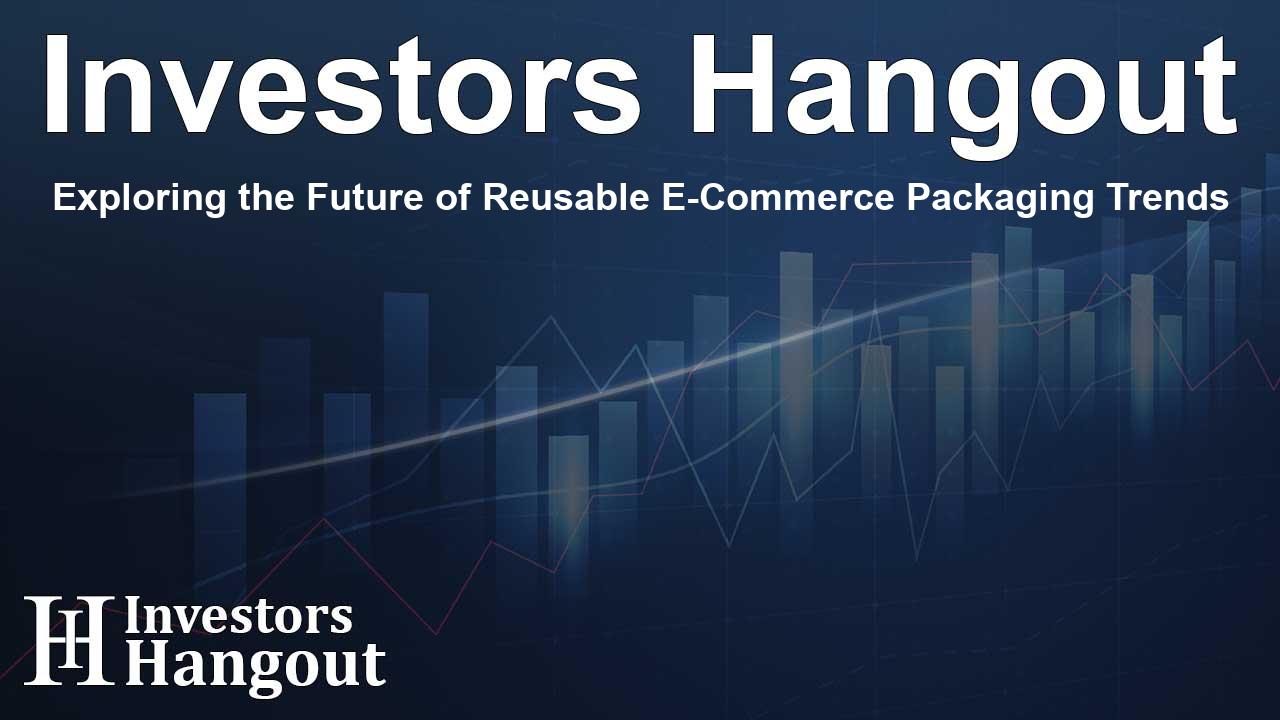Exploring the Future of Reusable E-Commerce Packaging Trends

The Rising Tide of Reusable E-Commerce Packaging
The global reusable e-commerce packaging market is on an impressive trajectory, anticipated to soar from approximately USD 9.41 billion in a short time frame to over USD 21 billion by the early 2030s. As environmental considerations take center stage, businesses are prioritizing sustainable logistics practices, with innovative packaging solutions emerging as a critical part of their strategy.
Understanding Reusable E-Commerce Packaging
Reusable e-commerce packaging is designed explicitly for multiple uses in online retail, providing an eco-friendly alternative to single-use options. Constructed from durable materials such as recycled plastics, polypropylene, and fabric composites, these packages withstand the rigors of shipment and returns, significantly reducing waste.
Key Features and Benefits
These sustainable packaging solutions often incorporate tamper-evident seals and smart tracking labels, elevating security and logistical efficiency. The primary aim is to minimize waste generation while also tackling the environmental impact associated with growing e-commerce deliveries, becoming increasingly essential for sectors with high return rates like fashion and electronics.
Current Trends Influencing the Market
Several trends are reshaping the reusable e-commerce packaging landscape. New government regulations are pushing the adoption of circular economy practices, which sets targets for packaging reuse rates. With AI-powered optimizations enhancing logistics management and inventory controls, retailers are better equipped than ever to implement sustainable packaging practices efficiently.
Innovative Sustainable Materials
There's a notable rise in adopting environmentally friendly materials such as biodegradable plastics and plant-based composites. These developments are attracting brands aiming to enhance their sustainability profiles while still meeting consumer demands for functionality and convenience.
Challenges and Limitations in Adoption
Despite the push towards reusable solutions, several issues currently impede wider adoption. Challenges include complex logistics surrounding the collection, cleaning, and redistribution of reusable packaging, as well as requiring active consumer participation in returning packaging. Moreover, the upfront investment needed for implementing durable materials can be a barrier for some businesses.
Consumer Engagement and Awareness
To ensure the effectiveness of reusable packaging systems, brands are tasked with educating consumers about the benefits and the importance of returning packaging. Low return rates can significantly impact the system’s overall effectiveness, necessitating that companies implement convenient and incentivized return processes.
Regional Insights and Market Dynamics
North America currently leads the pack in adopting reusable e-commerce packaging, thanks to its robust logistics infrastructure and a strong focus on sustainability. With major players in the industry recognizing the value of eco-friendly solutions, the region is well-positioned for continued growth.
U.S. and Canadian Market Trends
In the U.S., initiatives banning single-use plastics are paving the way for sustainable practices among large retailers. Canada is following suit, promoting zero-waste initiatives that encourage e-commerce businesses to adopt reusable packaging alternatives vigorously. The regulatory frameworks in both countries are consistently evolving to support these sustainability efforts.
The Future of Reusable E-Commerce Packaging
The future of the reusable e-commerce packaging market looks promising, driven by regulatory support, technological advancements, and changing consumer preferences towards sustainable practices. Companies willing to innovate and invest in sustainable solutions stand to gain significantly in a market that is projected to grow robustly.
Conclusion
In summary, as the awareness of environmental sustainability continues to rise globally, the reusable e-commerce packaging sector is poised for significant growth. Stakeholders must navigate the challenges while capitalizing on trends to create innovative and effective reusable packaging systems.
Frequently Asked Questions
What is reusable e-commerce packaging?
Reusable e-commerce packaging consists of materials designed to be used multiple times for shipping and returns, unlike single-use packaging that is discarded after one use.
Why is reusable packaging becoming popular?
Increased environmental awareness, government regulations, and consumer preferences for sustainability are driving the demand for reusable packaging solutions in e-commerce.
What materials are commonly used in reusable packaging?
Common materials include recycled plastics, polypropylene, and biodegradable materials designed to withstand multiple shipping cycles.
What are the challenges associated with reusable packaging?
Challenges include the complexities of logistics for collection, cleaning, and redistribution, as well as consumer participation in returning packaging to retailers.
How does this market impact sustainability efforts?
The reusable e-commerce packaging market directly contributes to sustainability by minimizing waste and environmentally harmful practices associated with traditional single-use packaging.
About The Author
Contact Addison Perry privately here. Or send an email with ATTN: Addison Perry as the subject to contact@investorshangout.com.
About Investors Hangout
Investors Hangout is a leading online stock forum for financial discussion and learning, offering a wide range of free tools and resources. It draws in traders of all levels, who exchange market knowledge, investigate trading tactics, and keep an eye on industry developments in real time. Featuring financial articles, stock message boards, quotes, charts, company profiles, and live news updates. Through cooperative learning and a wealth of informational resources, it helps users from novices creating their first portfolios to experts honing their techniques. Join Investors Hangout today: https://investorshangout.com/
The content of this article is based on factual, publicly available information and does not represent legal, financial, or investment advice. Investors Hangout does not offer financial advice, and the author is not a licensed financial advisor. Consult a qualified advisor before making any financial or investment decisions based on this article. This article should not be considered advice to purchase, sell, or hold any securities or other investments. If any of the material provided here is inaccurate, please contact us for corrections.
